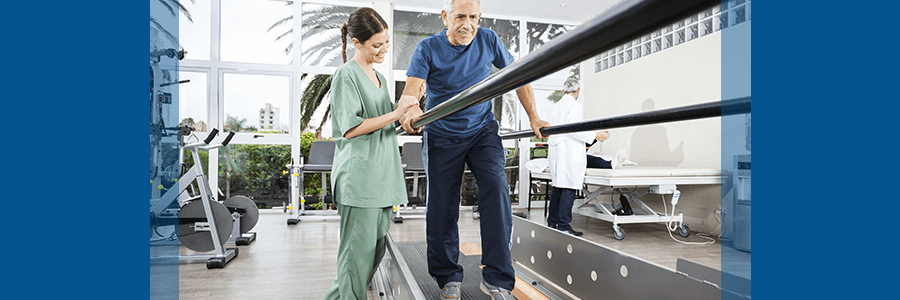-
Pain Topics
- Ankylosing Spondylitis (0)
- Arthritis (5)
- Back Pain (35)
- Bulging Disc (3)
- Degenerative Disc Disease (2)
- Facet Joint Syndrome (1)
- Failed Back Surgery (1)
- Foraminal Stenosis (2)
- Herniated Disc (5)
- Kyphosis (1)
- Neck Pain (14)
- Osteoporosis (2)
- Paget's Disease (1)
- Pinched Nerve (3)
- Radiculopathy (1)
- Sciatica (5)
- Scoliosis (5)
- SI Joint Arthritis (1)
- spinal cord injury (4)
- Spinal Deformity (1)
- Spinal Fractures (3)
- Spinal Stenosis (2)
- Spinal Tumors (1)
- Spondylolisthesis (3)
- Spondylosis (2)
- Whiplash (2)
-
Treatment Topics
- ALIF (2)
- Artificial Disc Replacement (1)
- At Home Care (4)
- Chiropractic Care (3)
- Corpectomy (1)
- Diagnostic Procedures (2)
- Diet & Healthy Lifestyle (6)
- Everyday Ergonomics (2)
- Exercises & Stretches (4)
- Facet Joint Infection (1)
- Foraminotomy (2)
- Kyphoplasty (2)
- Laminectomy (2)
- Laminotomy (2)
- Massage Therapy (1)
- Microdisectomy (2)
- Minimally Invasive Spine Surgery (13)
- Nonoperative Solutions (7)
- Pain Management (6)
- Physical Therapy (2)
- PLIF (3)
- Revision Spine Surgery (2)
- Scoliosis Brace (2)
- Self-Care (7)
- Spinal Fusion (3)
- TLIF (3)
- XLIF Corpectomy (4)
-
Media & Interactive
Spinal Stenosis: Understanding Your Treatment Options
The Basics of Spinal Stenosis Treatment
A particularly debilitating condition, spinal stenosis affects thousands and thousands of sufferers every year. Although possible with injury, spinal stenosis falls within a broad set of degenerative disorders that doctors link to aging. Because we often associate visible cues like wrinkles or graying hair with aging, we can easily neglect our hidden spine. However, as those with spinal stenosis can attest: Aging of the spine is a very real—and painful—phenomenon.
Spinal Stenosis refers to any condition in which the spaces between our spinal structures begin to narrow. This includes the spaces created by intervertebral discs, the foraminal openings in vertebrae for nerve passage, and the spinal canal. Of course, smaller spaces in the spine also means increased chances for compressed nerves and bone-on-bone contact. Furthermore, herniated discs, osteoporosis, injuries from falls, and everyday wear-and-tear can all cause spinal stenosis.
So, what—if any—treatment options exist for what seems like an inevitable part of the aging process? The answer: Many! First, we’ll start by outlining more conservative treatments. If these treatments prove unsatisfactory for resolving your pain, then we’ll move on and discuss more invasive (or surgical) options.
Let’s review some of your choices below!

Conservative Therapies for Spinal Stenosis
Nonsurgical therapies for spinal stenosis relief include:
- Pain Medications: An initial course of action, over-the-counter or anti-inflammatory medications can relieve the pain and irritation of spinal cord compression. For example, your doctor may recommend light doses of ibuprofen or aspirin to manage your discomfort. By reducing inflammation, you can painlessly complete your everyday activities, while also developing the supportive strength of your back muscles. As such, your doctor may prescribe these medications in conjunction with other treatments.
- Corticosteroid Injections: Slightly more invasive than oral medications, corticosteroid injections can provide instantaneous relief for uncomfortable symptoms. Moreover, more powerful and effective than oral medications, these injections deliver a temporary reprieve from neurological pain.
- Physical Therapy: Working with a Physical Therapist can provide an invaluable opportunity to rehabilitate your spine. These clinicians will design a customized regimen of exercises that strengthen your spine, enhance your flexibility, and relieve nerve compression.
- Musculoskeletal Exercises: Stress on the spine from weak muscles and excess weight can accelerate the progression of spinal stenosis. By engaging in exercise, you can lose weight, develop strong and flexible muscles, and achieve an overall boost in health. Although the idea of getting on a treadmill might seem repulsive, many fun fitness alternatives to jogging exist. These options include low-impact yoga, Tai Chi, cycling, and—one of the best exercises for achy joints—swimming.
- Chiropractic Interventions: Many people swear by their chiropractors, and there’s no denying as to why. Chiropractors employ an arsenal of clinical tools, including spinal manipulation, traction, and inversion, to restore lost space in your spine.
What happens when conservative therapies just aren’t cutting it?
For some individuals, spinal stenosis will progress at an unrelenting rate, and painful symptoms will only continue to intensify. Although these individuals have tried anything and everything to relieve their pain, conservative options just aren’t cutting it. Consequently, these individuals may find that surgery is their best (and only) remaining option.
Fortunately, minimally invasive advances in orthopedic surgery offer a variety of effective surgical options from which to choose. Your doctor will help you select the procedure that best addresses your condition, with particular regard to the location and cause of your spinal stenosis.
These procedures may involve any of the following techniques:
Minimally Invasive Surgical Options for Spinal Stenosis
Popular surgical options for spinal stenosis often include:
- Laminectomy: A minimally invasive laminectomy resolves the pain caused by compression of the spinal cord by directly targeting the source. By removing the lamina (the thin, bony posterior of your vertebra), your surgeon generates more space to relieve nerve compression.
- Foraminotomy: This conservative procedure addresses foraminal stenosis, or narrowing of the foramina. Openings in the posterior side of the vertebrae, your foramina act as gateways for the exit of spinal root nerves. In particular, these nerves branch off of the spinal cord, fanning out to innervate every corner of the body. Foraminal stenosis occurs when these openings become smaller, leading to excruciating compression of nerve roots. A foraminotomy involves the widening of these passageways to relieve pressure and allow for the transmission of nerve messages.
- Artificial Disc Replacement: When a damaged or deflated intervertebral disc causes spinal stenosis, an artificial disc replacement can change the game. By replacing a damaged disc with a state-of-the-art implant, you can restore height to the spine without losing movement or flexibility.
Wishing to seize control of your debilitating back pain? It’s time to seek out the guidance of a board-certified professional. With over 20 years of surgical experience, Dr. Daveed Frazier specializes in spinal stenosis management and relief. A Harvard-trained orthopedic spine surgeon and devoted educator, Dr. Frazier possesses the expertise to redefine your relief process!
Explore New York City Spine


